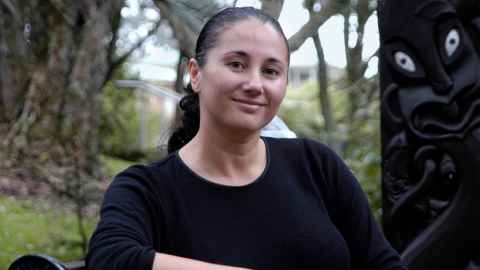Starpath Project: What have we learned?
24 May 2018
Starpath was one of the longest-running educational research projects in New Zealand dedicated to improving Maori and Pacific success in our schools.

For more than 12 years the project, which is based in the university’s Faculty of Education and Social Work, has been dedicated to improving Maori and Pacific success in our schools.
Its final piece of research is providing answers to the enduring problem: what will enable significantly more Maori and Pasifika students from low socio-economic schools to achieve University Entrance (UE), which allows progression into degree-level study?
“UE is the highest qualification that can be gained from school. No matter what students’ immediate post-school plans are, gaining UE opens opportunities for future study and employment,” says Starpath Director Dr Melinda Webber.
Over the years, Starpath has worked with nearly 40 mid- to low-decile schools, implementing a data tracking, target setting and academic counselling initiative to raise NCEA pass rates.
“In most Starpath partner schools, the shifts in Level 1, 2 and 3 NCEA rates have been quite high, between 5 and 20 percentage points. We are confident our evidence-based initiatives have contributed to this shift, along with the hard work and commitment from our schools to see their students achieve,” says Webber.
“For UE, however, schools generally did not make large improvements to their pass rates across the same time period. For this reason, UE has been the main focus of our latest phase of work.”
For the past two years, Starpath has worked with a smaller set of nine secondary schools in Auckland and Northland to understand and improve UE pass rates. Starpath researchers spent many hours inside these schools gathering data, observing academic counselling, and conducting interviews to better understand why UE remains a challenge for Maori and Pacific students.
At the same time schools were encouraged and supported to create ambitious UE targets based on student aspirations; to closely track and monitor student progress; and to maintain a culture of high expectations.
Wha-naungatanga means having a sense of belonging to a supportive
community and schools engaging with iwi and hapu, for example teachers
who are genuinely interested in their students’ lives outside of the
classroom. In the context of our research, manaakitanga was identified
as a school culture of giving and generosity, including giving time and
expertise.

What has Starpath found?
The findings have been divided into two categories: the enablers and the barriers to success.
Enablers included having effective teaching practices, robust use of data and academic counselling, and wha-naungatanga and manaakitanga.
“Effective classroom teachers provide individualised instruction, support, encouragement and specific feedback to their students. They are committed to their students, will go the ‘extra mile’ at lunchtimes and after school and have high expectations for behaviour and achievement,” says Tania Linley-Richardson, Starpath’s Professional Development Facilitator.
“Wha-naungatanga means having a sense of belonging to a supportive community and schools engaging with iwi and hapu, for example teachers who are genuinely interested in their students’ lives outside of the classroom. In the context of our research, manaakitanga was identified as a school culture of giving and generosity, including giving time and expertise.”
The barriers came down to ineffective teaching practices, perceptions of poor attendance and literacy, lack of academic counselling and data tracking, and teacher workload, among others.
What does this mean for schools and parents?
Starpath’s findings and recommendations have been compiled into a report that lays the foundation for schools wanting to build a culture of success and high expectations.
Among the recommendations is that schools a) establish a data team who have responsibility for data management and analysis, b) enable evidence-based decision-making and c) ensure evidence-based discussions are held about the educational pathway and opportunities to learn for every student.
Schools also need to carefully monitor course design to ensure students have opportunities to learn for UE Literacy, which is a key stepping stone to gaining UE, which can sometimes be missed.
“This research has allowed greater insights into what works, and what doesn’t, for Maori and Pacific students to succeed at secondary school,” Webber adds.
“We are especially grateful to our partner schools for allowing us to observe and gather extensive data for this ambitious project.”
Republished with permission from Education Central.